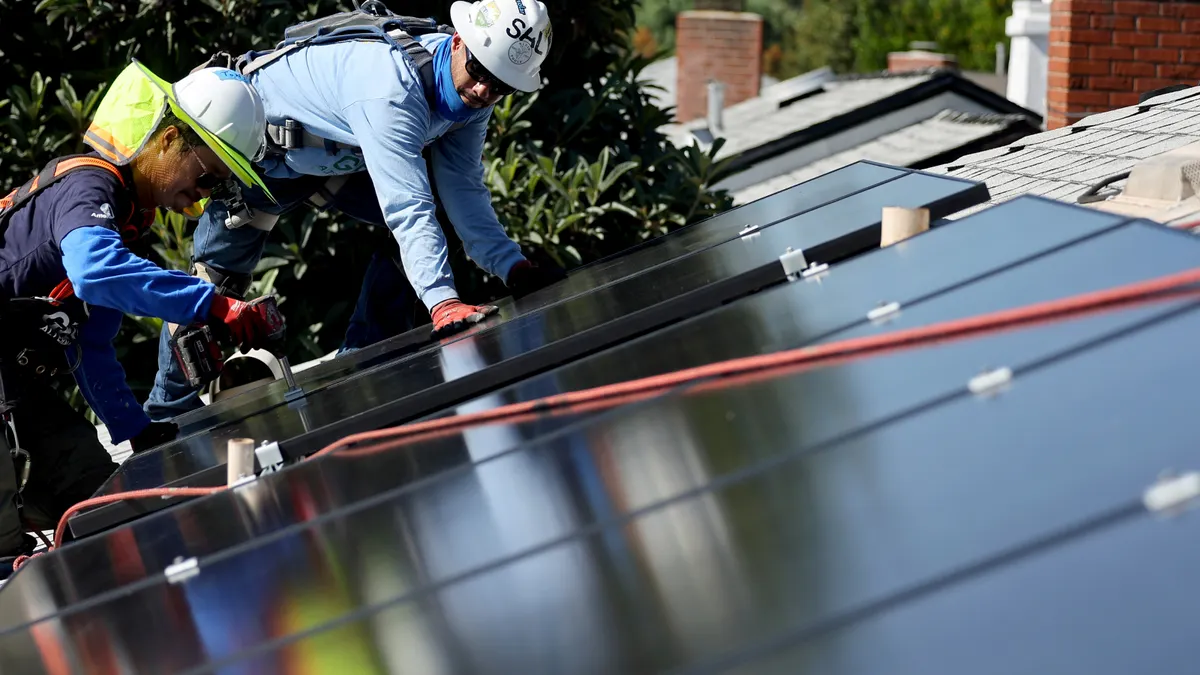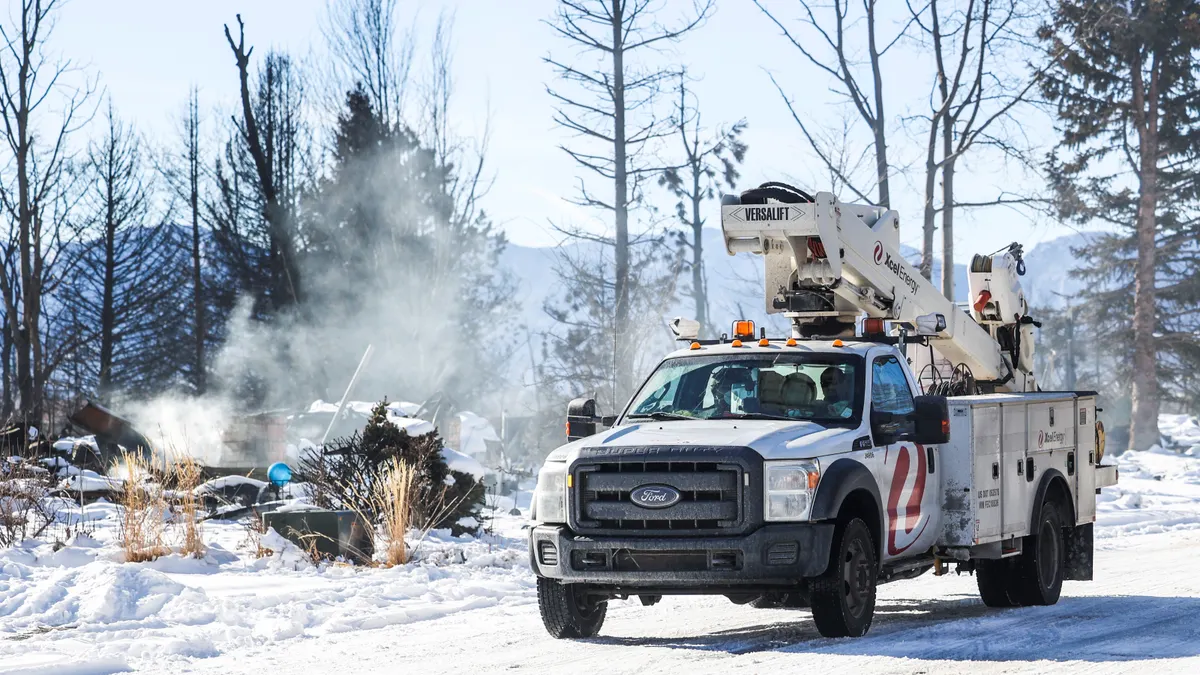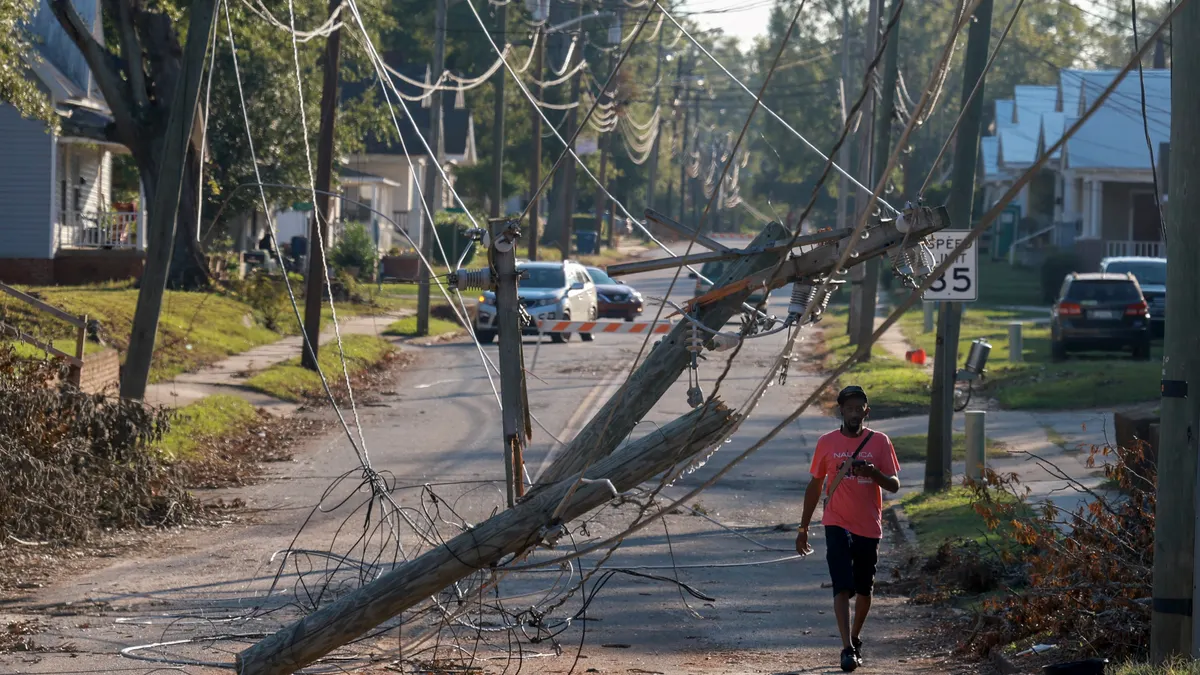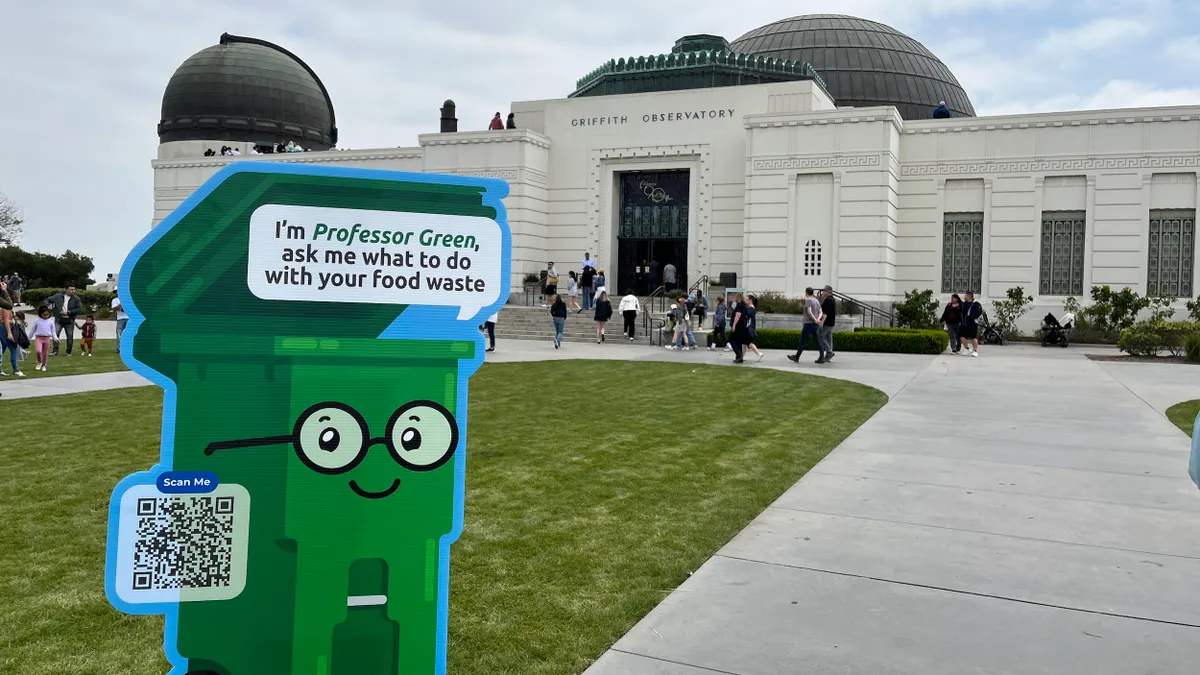Editor's Note: This piece was written by Charles Despins, co-chair of IEEE Green ICT Initiative. The opinions represented in this piece are independent of Smart Cities Dive's views.
Today, efforts to create "smart communities" bring critical trends, too often considered as unrelated, into sharper focus. However, the solutions to all of these trends – including a sustainable approach to smart communities – are intimately linked.
Globalization and the decline of heavy industry in many regions of the world, including in the United States’ so-called Rust Belt, has sparked a search for solutions.
At the same time, the increasing opportunities that information and communications technology (ICT) offer to the "connected" threatens to deepen the digital divide.
The fight against climate change and the reduction of greenhouse gas (GHG) emissions remains an uphill battle as tangible actions in this respect are often trumped by economic growth concerns.
In terms of public policy, a broadband strategy to build smart communities, regions and countries can actually be a unifying solution to all these issues if it addresses simultaneously the following three challenges:
- Widespread availability of broadband access (“broadband for all”)
- Ubiquitous application of ICT in different industry sectors
- Adoption and social acceptability of ICT solutions
Achieving all this is a major endeavor but one that must be tackled if so-called "smart" solutions are also to be sustainable – in other words, if they are to reconcile economic growth, environmental benefits and healthy social fabrics.
In terms of the first challenge, the "broadband for all" concept implies that it must be considered as an essential enabling infrastructure much like roads, sewers and the power grid. Broadband access is not about watching movies on the internet but is rather a fundamental pillar of ICT-enabled transformations towards sustainability in the 21st century. Broadband access should be ubiquitous, affordable, reliable, secure and truly "broadband." For example, decentralized, municipal-based approaches in Sweden have proven to be successful in this respect without resorting to massive, nation-wide public investments.
Once broadband is available to every community, this enables enterprises and entrepreneurs to thrive with access to global information, business opportunities and customers. This is a proven strategy that provides the foundation for location-independent entrepreneurship and education, bridges the digital divide, and contributes to more efficient, less polluting smart communities.
This brings us to the second challenge of ubiquitous application of ICT solutions in different industry sectors, and more generally in various fields of human activity. It offers huge potential environmental benefits in terms of energy efficiency and mitigation of GHG emissions, all while spurring productivity and economic growth, a well documented impact of ICT. Proper adoption of ICT-enabled solutions must be achieved among individuals as well as within private and public organizations. Yet ICTs are powerful technologies and if not used properly, can wreak havoc. Hence, social acceptance of these solutions is essential to make full use of their potential to create a better life for citizens.
This third challenge may seem simple; however, it is decidedly not easy. Regulatory changes at various government levels, organizational transformations as well as cultural and behavior changes among citizens and end-users of broadband may be the most difficult barriers to its adoption and best uses. But allow me to make the case as to why we must support it.
The power of green ICT
Broadband is simply a fat pipe. It’s how we use broadband – the applications, solutions and services that ride on it – that can contribute to smart and sustainable communities. And the green ICT movement is a critical component of those solutions and services.
Studies have found that, today, ICT generates between 2-3% of global GHG emissions, about the same as another major culprit, the airline industry. However, as Internet use is skyrocketing, ICT infrastructures and applications could actually outpace the airline industry in terms of GHG emissions, with related environmental damage.
Today, the ICT industry has made great strides in a concerted global effort to exponentially improve the energy efficiency of telecom networks and reduce its GHG footprint. But the broader opportunity lies not so much in "green ICT" but in "greening through ICT." This means that ICT-enabled transformations can drive energy efficiency, reduced GHG footprint and sustainability in various spheres of human activities and different industry verticals through the infrastructure of smart communities that will also support entrepreneurship and economic revival.
In fact, a 2015 GeSI study has shown that 20% of the world’s GHG emissions could be eliminated by 2030 through ICT-enabled solutions in various vertical application sectors. This "greening through ICT" opportunity should therefore be part of any GHG emission reduction action plan.
From smart to sustainable communities: the challenges
In my view, "smart" communities aren’t necessarily "sustainable" communities. Smart technology may make systems more efficient and autonomous, but sustainability demands more holistic thinking that encompasses technology’s entire life cycle, from manufacturing to use and disposal.
In a sense, that’s the easy part. To truly achieve sustainable communities, we could benefit from much greater dialogue and knowledge exchange between technology innovators and policymakers. And because technology should be ultimately a tool for citizens, such a dialogue could foster adoption by end users and the required social transformations that challenge humans’ tendency toward behavioral inertia.
Even with ubiquitous broadband supporting green ICT applications and entrepreneurial solutions, the people left behind by the digital revolution, i.e. Rust Belt ex-factory workers or their offspring, will need support to join what they may perceive is only a "gig" economy, which admittedly has its own pitfalls. They’d have the tools at hand, however, as they grasp the opportunities.
Case study: Stockholm
We can look abroad to early adopters of ubiquitous broadband to see how it has contributed to economic prosperity. Way back in 1994, Stockholm embarked on a city-sponsored fiber backbone that initially connected civic and educational institutions, though businesses soon sought connection to the network. By 2002, residential broadband caught on and in recent years connectivity has extended to almost all of the city’s population.
A study of Stockholm’s broadband policy – "Stockholm’s Stokab: A Blueprint for Ubiquitous Fiber Connectivity?" – cites three major resulting contributions to economic growth. It has brought Stockholm recognition as business-friendly and established it as a tech hub with state-of-the-art telecom infrastructure. The city administration is using fiber connectivity to raise the efficiency (and lower costs) of public services, and its open data initiative has enabled third-party developers to devise new services using city-generated data.
The city’s investment showed a positive return-on-investment (ROI) within ten years for a system that is owned by the citizens and offers open access to any party’s value proposition. Indeed, scores of IT solution providers currently use the network to serve various industry verticals.
Granted, Stockholm is a major European city with a metropolitan and cosmopolitan mindset that probably sped broadband adoption and exploitation of its many potential uses. But the principles of public-private partnerships, open access, attraction of value-creating entrepreneurs and enterprises and tangible results should speak volumes to anyone pursuing infrastructure solutions for smart and sustainable communities.
The takeaways
Just as many parts of the world, for instance, pursued ubiquitous access to power in the 20th century and created special programs to ensure that power reached rural communities, so it is a 21st century need to similarly extend broadband to all.
City planners, managers, citizens and other stakeholders should recognize broadband as essential infrastructure, just like water and power, and leverage its contribution to economic development, a clean environment and healthy social fabrics, particularly when globalization and shifts in traditional manufacturing paradigms put their communities at risk. It is the core transition we all have to make in the first few decades of the 21st century.

















